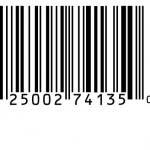Rethink was made available in Chinese this week, and Amazon is one of the places people can buy it http://www.amazon.cn/mn/detailApp/ref=sr_1_1?_encoding=UTF8&s=books&qid=1272471597&asin=B003AU4YQ8&sr=8-1#
Kodak moments and fallen trees, brilliant repositioning
The familiar old saying “If a tree falls in the forest and no one is there to hear it, does it still make a sound?” was a fun philosophical topic for a lot of us to discuss/debate in our younger years.
Well Kodak, a company that I thought was all but ready to be buried alongside Polaroid as a 20th century photography company that had become outdated, has just given that phrase, and itself, new life.
I am the first to admit that I haven’t paid close attention to Kodak lately, but that’s in large part because I thought they were becoming irrelevant in the age of digital photography. Not only was I wrong about that, but in an effort to strengthen their position in the digital age, they have literally redefined the term “Kodak Moment.”
The Kodak Moment used to be the photo itself, that was what you were capturing. That made sense back the days when we printed out all of the photos we took, the photos would always get seen at least once. In the digital age many pictures never get a close look, and even fewer get shared for the simple reason that without film limitations and costs, we can literally take thousands of pictures which we will at some point sift through, maybe, but many of these photos won’t ever be seen.
Kodak very cleverly figured that out, and now they say “The real Kodak moment happens when you share.”
The implication is that like the tree falling in the forest with no one around, if you take a picture but don’t share it, was there really a Kodak moment? As part of this, as I have learned, Kodak has all sorts of products ranging from cameras to printers to electronic picture frames and other photo sharing tools aligned with this sharing social element of photography.
I think a lot of companies can learn from this great rethinking that Kodak has done, where they realized people were viewing photography differently and by redefining the Kodak Moment, instead of going out of business as Polaroid did, they have beautifully repositioned themselves for continued success in this market. We take way, way more pictures than we used to, but the way we view them and share them is radically different from how our parents and grandparents did. Seeing that shift and adapting seems like a great way to keep a great brand alive and well for some time to come.
And yes, the tree still makes a sound.
-Ric
The killer iPhone app is in CPG from Alice.com
I have blogged about alice.com before, and while I still think they have one of the greatest, most disruptive operating models to come along in a long time, I learned today that I was wrong about one part. I thought that they sold the data about purchasing history (without personally identifiable information) to the manufacturers of the consumer packaged goods (CPG) that they sell at cost, with free shipping to their customers. Instead they give the data back to manufacturers who place ads on the site, which isn’t a huge difference, but worth mentioning.
to the manufacturers of the consumer packaged goods (CPG) that they sell at cost, with free shipping to their customers. Instead they give the data back to manufacturers who place ads on the site, which isn’t a huge difference, but worth mentioning.
But today I was actually talking with an employee of Alice (evidently one of the founders assigns, as an analogy, a type of animal to each employee that somehow reflects their personality), known as the Irish Setter for reasons we didn’t go into.
The discussion was around how to get people to rethink how they buy their CPG and he talked about an iPhone application they have. When you are running low on toothpaste or dish soap or whatever, all you have to do is pull up the iPhone app and wave the UPC code in front of the phone and it will put that product in your shopping cart on Alice. No more shopping lists. So in the time it takes one person in a household to tell the shopper in the house to get more Crest toothpaste, it could be in your online shopping cart.
Wow.
 Now think about who could expand the use of this? What if you are in a store like Barnes&Noble and you find a book you like, but you don’t have to have it right now. What if amazon.com had an app that let you scan the book and let you buy it for less on their site. No writing down the title or remembering it, or to go out to amazon to order it. It’s in your shopping cart right then and there. And now that amazon is in so many different product arenas, you could do that in almost any store and know you are getting a better deal. It’s a big punch in the arm for the people paying for the storefronts, but business is business.
Now think about who could expand the use of this? What if you are in a store like Barnes&Noble and you find a book you like, but you don’t have to have it right now. What if amazon.com had an app that let you scan the book and let you buy it for less on their site. No writing down the title or remembering it, or to go out to amazon to order it. It’s in your shopping cart right then and there. And now that amazon is in so many different product arenas, you could do that in almost any store and know you are getting a better deal. It’s a big punch in the arm for the people paying for the storefronts, but business is business.
Too bad alice.com doesn’ t have it’s own bar code. Amazon would be wise to put Alice in its own shopping cart, right next to Netflix (which I have blogged about before).
-Ric
Apple’s dangerous dance is probably the right move
I didn’t intend to write consecutive blogs about Apple, but with all the rethinking going on over there, it’s hard to resist. This time I am focused on “how” they ensure application safety on their mobile devices and why that’s very high on the list of what customers like me value.
Worth noting at this point is that I bought an iPad for my son and we both love it. It makes my iPhone seem so tiny and much less useful.
But despite the early huge success of the iPad, Apple is now in a very dangerous dance, no matter what their real motivations are.
Last week Apple announced that they are tightening their already firm grip on the applications that run on the iPhone and the other mobile devices. Apple is requiring people to develop the applications using their programming tools, appearing to be a competitive move against Adobe Systems who just announced a new set of developer tools on April 12 (yesterday). Beyond this, developers can no longer use outside services to measure how their applications are performing.
There is a long list of companies that have failed by keeping a product in a proprietary environment, Sony’s BetaMax being sort of the poster child example of that, ceding almost overnight the home video market at the time to a lesser format, VHS.
But I can’t help but think that Apple’s tight-fisted control isn’t just about market share. Many of us have had bad experiences on the social networking site, Facebook, for the very reason that Facebook had no controls to speak of over what kind of apps were accessible on Facebook and as a result a lot of us got viruses downloading apps, and I for one will never again download an application on Facebook. On the internet, trust is king.
Whether Apple is too restrictive right now is something I can’t judge, but I do think they have to have enough controls in place so that people don’t have the same experience with their products. Right now I totally trust Apple, I buy books and applications from their online store often. But the first time my credit card data is compromised via an Apple-related application, it will be the last, and I expect I am not the only one who feels that way.
I have blogged before about trust and security and how some companies strike the wrong balance between trust and security and what their customers value (like Qwest foolishly preventing me from paying my phone bill online because I couldn’t remember my password), but this is different and for me at least, I think the controls do have to be pretty tight. The other side of the coin is that if Apple didn’t do this, given the thousands of applications being developed, think of how many quality control people they would have to hire to verify the apps that get done? Controlling the tools, testing, and reporting platform may seem onerous, but I would like to hear a better alternative that works for Apple and doesn’t risk losing customer trust.
So bravo to Apple for keeping things safe for us (and keeping our trust intact), but don’t choke the development community to death. Please.
-Ric
iWonder what Apple plans to do with iAd data?
 It’s common for me to read an article and think there is a huge question needs to be asked that is the biggest part of the story, and that question goes unasked.
It’s common for me to read an article and think there is a huge question needs to be asked that is the biggest part of the story, and that question goes unasked.
It was no exception when I read Brad Stone’s article Apple Edges Into Selling Of App Ads today in The New York Times. The article explained that Apple is now making it easy for application developers to serve up ads through the applications they develop. The message is that this is a way to keep the price of applications low while giving a new source of revenue to the developers. OK, I get that.
The big question that wasn’t asked was who owns the data?
It’s no secret that the holy grail of marketing is to know more about your customer and what will cause them to buy your products and services. That’s the entire business model of Alice.com, that’s why MasterCard has set up the MasterCard Marketplace. At breakneck speed we are getting to the world depicted in the movie We Live In Public, where our data about who we are and what we buy and don’t buy is information we don’t own, but someone does – and it’s worth a lot of money.
The organization that can be the most effective at sitting between the marketer and the consumer, is able to collect all of that information and then sell it back to the marketers – which is HUGE. There isn’t just going to be one company that does this, but given their current position, Apple is in a really good place to be an 800 pound gorilla in this space. But it’s not clear to me that Apple owns the data. AT&T is the only carrier (at the moment) for the iPhone – do they own the data? Do they share it with Apple? Does Apple’s licensing agreement with the end users allow them to sell the data?
To be clear, marketers in most case don’t care about your name, they just want age, gender and ZIP code. People who are getting lathered up about privacy issues here need to switch to decaf and relax.
This data is not only the holy grail of marketing, but it’s going to transform “how” business is done because it’s, for all practical purposes, a net new asset in the world of commerce, and it will change prices which will make things more accessible to people and it will ripple through lots and lots of industries in ways we can’t (or I can’t) yet imagine. It’s the same reason I have said Amazon should buy Netflix – because overnight they get an engine that is great about soliciting customer feedback about what customers like and don’t like, which then makes them much smarter about recommending things (which Amazon is currently cartoonishly bad at – they could be making so much more money and building so much more customer loyalty it’s numbing). My sense is that is what MasterCard is trying to do, my hope is that as they get “smarter” about what we want to buy, they will ask for our input as well. The big thing about Amazon and Marketplace that is different from Netflix is that I will often buy things like gifts for other people, and those kinds of things should be mapped into my preferences profile differently from the things I buy for myself and unless I say it’s a gift they have no way of knowing that.
Anyway – this is a HUGE change in business and I continue to watch it with great interest – still mostly cheering for alice.com.
-Ric
Ivey Business Journal publishes article by Ric Merrifield
The Ivey Business Journal, which has been called the Harvard Business Review of Canada, published Ric Merrifield’s article “A New Lens for Looking at the New Business Environment” which you can find here http://www.iveybusinessjournal.com/article.asp?intArticle_id=870
- « Previous Page
- 1
- …
- 26
- 27
- 28
- 29
- 30
- …
- 51
- Next Page »